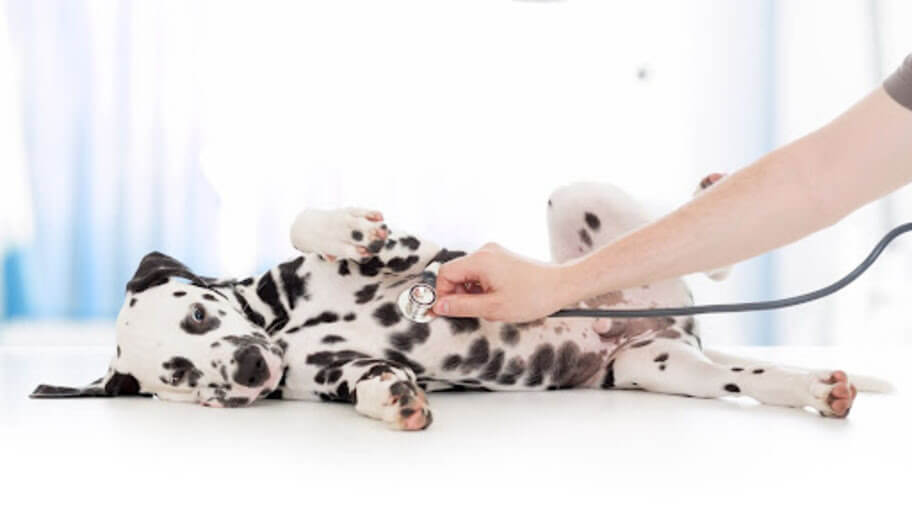Pet owners may sometimes have to pay large and unexpected veterans bills for which they don’t have the money. That’s where pet insurance can help. Nowadays, there are several pet insurance companies offering different plans. Finding the right plan can seem overwhelming but we’re here to help you find the best pet insurance quote.
Since pet insurance plans are not standardized, the same benefits may vary from plan to plan. This is why it is essential to look at more than just the price when you start shopping.
You should also look at the different coverages side-by-side to find the best pet insurance plans. After all, a plan that has a cheap price but covers none of your concerns won’t pay off in the end. It’s best to compare plans with a similar range of benefits.
You may have some questions about pet insurance, such as: does pet insurance cover heartworms treatment? Does pet insurance cover hip dysplasia? Is there pet insurance for allergies? We’re here to answer all those questions, and more. Simply follow the guide below.
Here’s what to look for when shopping for pet insurance quotes.
Where to Find Pet Insurance Quotes
You can generally get pet insurance quotes for free. They can be found in many ways: online, by phone, by email, or in person.
Many pet insurers make it easy to request a quote online by answering a few questions about your pet. Looking at individual pet insurance sites is a simple and easy way to collect quotes. You can also use a price comparison site to compare several insurers.
Whether you’ve previously purchased insurance with a company that offers pet insurance or you prefer to talk to someone about your options, many insurance companies will put you in contact with an agent by phone, by email, or in person.
Types of Pet Insurance Plans Available
Before you start getting quotes, you should understand the different types of plans available. The plan you choose will have a huge impact on your quotes, as well as you and your pet’s future happiness with the plan you have purchased.
Accident-Only Plan: Accident plans only cover injuries caused by an accident. For example, if your pet is hit by a car, an accident-only insurance plan will help cover treatment. Since these plans are designed for emergencies only and exclude illness or other conditions, premiums are lower than for an accident and illness plan.
Accident and Illness Plan: This type of plan is the most common and provides the best coverage. Accident and illness plans cover injuries caused by accidents as well several medical, health, and hereditary issues. Although coverage varies among insurers, plans generally cover:
-
-
- Digestive problems
- Care after an accident
- Ingesting foreign objects or toxins
- Cancer
- MRI or CT scans
- IVDD (spinal cord disease)
- Gingivitis
- Lab tests
- Ultrasounds
- Arthritis
- Allergies
- Hospitalization
- Prescription medications
- Hip dysplasia
- X-rays
- Diabetes
- Urinary tract infections
-
Wellness Plan: Like us, pets need routine care to stay healthy. A wellness plan helps you take preventative measures to keep your pet healthy and detect the first signs of illness. From vaccinations to dental cleaning to routine checkups, pet wellness plans will help pay for some of these costs. You can add wellness or routine care coverage to a pet insurance policy, due to the fact that they are usually not standalone policies.
How Do Deductibles Work for Pet Insurance
A deductible is the amount you pay for veterinary expenses before insurance takes effect.
The most common type of deductible is an annual deductible. You pay an amount in vet bills and then the plan pays for the rest of the year. According to the National Association of Insurance Commissioners, an annual deductible typically costs 4% to 6% more than per-incident deductibles. A per-incident deductible requires you to pay a new deductible each time you file a claim. You can find plans that have a $0 deductible, such as Trupanion.
Even after you reach your deductible, the pet insurance plan may not pay 100% of the costs. Most plans pay a reimbursement percentage of around 70%, 80%, or 90%. A few plans pay 100% after the deductible, like Figo.
You should also look at the annual coverage limit, which is the maximum the plan will pay during the policy year. Some companies offer unlimited coverage, while others cap their payments.
What Factors Affect Pet Insurance Quotes?
Pet insurance quotes will vary depending on specific information about your pet and the insurance plan you choose. When pet insurance companies price a policy, they look at several factors, including:
Policy Details: Your policy details also impact your rate. They include policy type, maximum annual coverage, reimbursement percentage (coinsurance), and deductible amount.
Your Address: Because veterinary fees vary by location, where you live is taken into account. People living in urban areas typically get higher pet insurance quotes.
Your Pet’s Age: You can usually buy insurance for your pet when they turn seven weeks old, although this is just an average and the actual age limit varies from insurer to insurer. As well, it is likely that your premium will be lower when your pet is young. Since pets tend to have more health issues as they age, coverage costs increase as your pet ages.
Your Pet’s Type and Breed: Certain breeds are more susceptible to developing specific health issues. This will impact quotes, especially for dogs.
How to Compare Pet Insurance Quotes
To compare pet insurance quotes, you should compare similar plans. This can be somewhat complicated, as you may not have the same coverage options for all the plans you want to compare. Here are the things you should watch out for:
Access to Veterinary Assistance Lines: Many pet insurance companies offer 24/7 veterinary assistance lines, which is very convenient in the case of an emergency. If your pet gets sick during the night, it is always helpful to be able to reach a veterinarian.
Claims Filing Process. It’s important to choose a policy that has a simple and fast claims filing process. During a pet-related emergency, the last thing you want to deal with is a complicated claims process. Some pet insurance companies offer you the possibility to instantly file a claim on your mobile device and reimburse you electronically within days.
Coverage: Most pet insurance plans offer a choice of coverage. Some insurers offer annual coverage limits, while others offer unlimited annual coverage.
Exam Fees: Some pet insurance companies cover the cost of treatment, but not the cost of a vet visit. It’s preferable to look for companies that cover exam fees and injury visits.
Deductibles: Be careful when choosing between an annual deductible versus a per-incident deductible. With an annual deductible plan, the insurer starts to reimburse veterinary expenses after you have paid the annual deductible amount in veterinary expenses. With a per-incident deductible, you have to pay a new deductible for each pet insurance claim, placing a greater financial burden on you. That’s why plans with an annual deductible typically cost more than a per-incident plan. Deductibles are generally in the range of $50 to $250 per year, but you can save money by choosing a higher amount.
Discounts: If you insure more than one pet, look for companies that offer multiple pet discounts, such as Spot and ASPCA.
Premiums: To maintain coverage, you will have to make an annual or monthly payment called a premium. While you might be tempted by a lower pet insurance quote, it usually means your policy won’t cover much unless you’ve chosen a high deductible or lower reimbursement rate. You may be able to save money if you pay in full for the year and avoid the monthly installment fee.
Reimbursement Rate: When you pay a medical bill, you have to pay a deductible. Then, the pet insurance will pay a portion of the remaining amount. The higher your reimbursement rate, the lower the share of medical costs for which you are responsible. Typical reimbursement rates are around 70%, 80%, or 90%. A few pet insurance companies offer a 100% reimbursement, meaning they will pay 100% of the costs after the deductible is paid, but these are rare.
Routine Wellness Plan Add-Ons: Many pet insurers offer routine wellness coverage as an optional add-on. Wellness coverage will help cover routine health care expenses to keep your pet healthy throughout the year.
Waiting Period. All pet insurance policies have waiting periods before coverage takes effect. Check if there are longer waiting times for certain conditions such as cruciate ligament problems.
Final Thoughts
Now that you have all the information in front of you, you are well on your way to picking the best pet insurance coverage for you and your pet. Always compare and shop around so that you know you’re getting the best deal for your needs.
Featured Image: Megapixl








